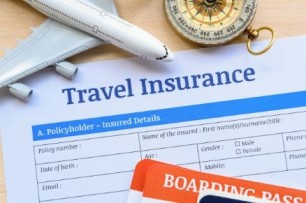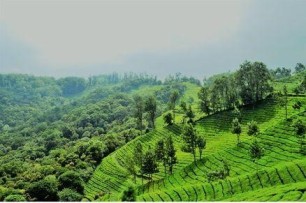General Insurance Blogs, Articles & Updates by - Magma Insurance
Have us call you
- RENEW YOUR POLICY
- BUY NEW POLICY

Things you should know before renting a house for the first time
Searching for your perfect home can be quite overwhelming, and renting can make it even more stressful if not done correctly. Renting a house is generally referred to as a property occupied by somebody other than the house owner. There are several things one must consider before finalising a house, and you need to ensure that you clarify all your doubts before arriving at a conclusive decision and paying.
In this article, we will discuss what you should know before renting a house for the first time. These points will not only help you stay calm while renting but also ensure that you make a well-informed decision before going ahead with the agreement. After all, it's going to be your home once you move in.
1. Location:
Think about the location before moving in. Notice the surroundings and the essential services and facilities available in the vicinity. Is it a school or a pub? Will you be comfortable with loud music and traffic noise? Check the area for essential services for you before signing the agreement.
2. Amenities:
Check the amenities like the washing machine, geyser, air conditioner, etc., if they come along with the house. It is your responsibility to examine these inventories and their working and get the landlord to confirm their satisfactory working in writing. It would be best to ask the landlord to clarify the repair or replacement of these appliances.
3. Release clause:
A release clause entails that the tenant must pay a fee and find a replacement if they wish to release themselves from the contract and move out of the house. Discuss the clause with your landlord beforehand.
4. Repaint:
Enquire if your landlord will be repainting the house before you move in. And if they have any plans to paint or deep clean the house, it would be good to get the work done before you sign the tenancy agreement and make the payment.
5. Pets:
It is a good idea to discuss if pets are allowed during the negotiations with your landlord. Breaching the tenancy agreement by keeping a pet can lead to possession and eviction in the future.
6. Water:
During the house inspection, open the taps and shower and check the water pressure. In case of a problem, negotiate with your landlord before signing the agreement.
7. Advance:
Usually, landlords ask for two months' payment in advance, but there is no fixed amount. They can maintain discretion about the deposit amount. Make sure you bring this up during your negotiation or agreement.
8. Terms and conditions:
Read the agreement very carefully. You can challenge terms and conditions you are uncomfortable with or find confusing. But you must do this before you sign the deal. Never sign an agreement without having complete knowledge about it. Any carelessness done during this period can have adverse consequences later.
Now that we have discussed the things you should know before renting a house for the first time, it would be wise to verify with your landlord if he has purchased home insurance for the home. Being covered under the umbrella of the best home insurance in India can keep you relaxed and free from worries of any damage or theft at your rented apartment. Ensuring security should be on the top of your priority list before shifting to a rented home.
Click HERE to know more about the best home insurance in India.
Disclaimer: The information provided above is for illustrative purposes only. To get more details, please refer to policy wordings and prospectus before purchasing a policy.

Why is travel insurance becoming more important now
Life is full of unexpected events, but the downside is that even the slightest miscommunication can put your goals at risk. A good general insurance lets you choose your protection against the costs of accidents and natural disasters — from theft to car collisions, fire damage to travel mishaps. And with this flexibility, you can mix and match the coverage you need from a general insurance online quote and get an affordable and customised plan.
Let’s understand the necessity of travel insurance:
Travel insurance seems unnecessary, and travellers underestimate the significance of travel insurance, as its purpose only comes to the fore when things go wrong. For example, if a flight gets cancelled unexpectedly, or if you get sick while travelling.
Travel insurance is a particular type of insurance that covers you for travel-related perils. It is not the same as your regular home, car, or health insurance. And, if you want to know why it is so important, read on.
1. Loss of luggage:
Landing at your destination and finding out your luggage is missing? And you're stuck with only the stuff you brought along - which isn't much. Fortunately, most insurance companies will provide a certain amount as compensation for such incidents as part of their policy.
2. Cancelled / Delayed trip:
If you plan to postpone, cancel or rearrange your trip, you can rest easy knowing that your travel insurance policy may provide you with financial protection. Trip delays, cancellations, and curtailments are all covered in case of an emergency.
3. Hospitalisation and Emergency expenses:
Travelling doesn't mean that you are entirely safe from the risks of getting hospitalised. Travellers often fall ill in the middle of their trip and have to even stay in a hospital if the situation worsens.
The holiday can turn into a nightmare if you don't have a valid policy covering hospitalisation expenses. Your travel insurance covers all your transportation, food, and medical expenses on getting hospitalised during your trip.
4. Fraud Protection:
It can happen to anyone. You're enjoying a vacation, and all of a sudden, your financial security gets compromised. Maybe you lost your debit credit card, or worse — you notice a fraud transition on your credit card. Maybe this is the first time such an incident has occurred to you, but it could happen again.
5. Liability protection:
While you're on your trip, keep an eye out for any personal injury or property damage. You could be held legally liable for it. But just because something is likely doesn't mean it will happen. With proper liability protection in place, you won't have to worry about paying for others' mistakes.
If you're concerned about safe and worry-free travel, there's no better time than now to buy travel insurance. Increased awareness means that more and more consumers are looking for a way to protect themselves when they travel.
Are you someone who wants protection and doesn't want to risk losing your vacation money or belongings? In such an accident or illness, there's no better time than now to get travel insurance. General insurance online quote is essential for financial security. These policies protect you against all possible financial risks, including travel you might face in your life. It is also a great way to protect your other assets and valuable possessions.
Click HERE to get general insurance online quote.
Disclaimer: The information provided above is for illustrative purposes only. To get more details, please refer to policy wordings and prospectus before purchasing a policy.

Six financial goals you should target in the year 2022
The year 2022 is specifically crucial as the pandemic has caused individuals from all around the globe to pause and reconsider how they have handled their funds over the last couple of years. While the idea of plotting financial goals in the aftermath of the pandemic recession may seem daunting, it is an excellent time to participate in a different type of financial goal-setting.
As we are just getting started with 2022, remember, the sooner you begin, the better you will achieve your financial objectives. So, to help you start your journey to financial freedom, we have written this blog which points out 6 goals that you should meet. Let us take you through each of them briefly.
1. Build an emergency fund:
A liquidity backup set up for emergencies and unexpected bills is known as an emergency fund. You can use these savings for unanticipated costs or payments that are not part of your regular expenses. It can act as a financial cushion when you are looking for a job change, are unemployed, and support you during the uncertain times of Covid-19. It's just like an umbrella, not much of use most of the time but tremendously valuable when needed.
2. Savings for a home:
Owning a home is one of the most popular financial objectives people seek to fulfill. It is evident that people must work hard to achieve this goal. Planning for it may be difficult but not impossible if you start early. To appropriately fund this aim, you must first analyze your financial flow and requirements. Check your spending habits and invest in schemes that will earn you a good return in the future.
3. Adequately insure yourself, your family, and your assets:
You and your dependents can face numerous financial hazards if not adequately insured. Health insurance is crucial in today's times. We cannot deny the importance of general insurance in India for your other assets like a house, motor vehicle, etc. There are many good companies offering health and general insurance in India.
4. Invest for your retirement:
Saving for your retirement is a crucial financial long-term goal. Keeping a retirement fund to live comfortably and pay for medical expenses in your later years is essential. However, achieving this goal will be wholly dependent on your financial portfolio and spending habits over the years unless you have other forms of passive income.
5. Savings for your next generation:
With an average of two kids per household in our country, the university and upbringing cost is very high. You would indeed desire the best college and educational facilities for your offspring. However, paying for all the tuition fees and other costs of having kids is not that easy. After attaining your financial freedom, planning for your next generation is the most important goal you should look forward to.
6. Being debt-free:
Staying out of debt is a must for your financial wellness. This will ensure that you achieve your other financial objectives without any hurdles. Whether it's repayment of loans or clearing credit cards debts, make a strategy to get out of it as soon as possible.
Setting financial objectives will be one of the most important things you will have to do every successive year. If you're a married individual, you'll notice that many of these targets aren't purely personal and heavily involve your partner. Having communication with your partner and financial adviser can help you work together to get the most out of your resources and meet your financial targets. Happy New Year and happy financial planning!
You can check the most economical plans HERE.
Disclaimer: The information provided above is for illustrative purposes only. To get more details, please refer to policy wordings and prospectus before purchasing a policy.

Visit these top six unexplored tourist destinations of India in 2022
We all enjoy the occasional getaway to rejuvenate ourselves and break the mundane routine of our day-to-day lives. So often, we find ourselves surfing the internet for hours, trying to zero down on the one place we can go to and relax with our loved ones. But more often than not, we end up not going to these places. And there is no shortage of images on the internet, so we find ourselves looking at them and yearning to be there.
Today we will be looking at six places that will promise you peace and calm on your next getaway.
1. Cherai Beach, Kerala:
Popularly known as the ‘Princess of Arabian sea’, Cherai beach is located about 16 miles from Ernakulam on Vypeen island. This golden beach boasts blue waters and lush green vegetation stretches that are a must-visit for anyone who wants to unwind by a beach. People can enjoy various water sports in this destination. Cherai also hosts a five-day tourism festival that conducts an array of diverse cultural and traditional art forms.
2. Bhimbandh, Bihar:
This hot spring holds great significance in the history of India. Unfolding the pages of the past, during Mahabharat, when the Pandavas had to live in disguise, Bhimbandh was one of the locations that they had chosen. The temperature in this natural spring goes up to 72 degrees celsius. It is believed that Bhim was instrumental in placing slabs across the stream to prevent the water from flowing at high speeds. Hence the name “Bhimbandh”.
3. Gandikota, Andhra Pradesh:
India’s Grand Canyon, Gandikota, is undoubtedly one of the most picturesque places in the land. The main attraction is the Gandikota fort and its ruins. Built-in red sandstone, the fort has beautiful and intricate carvings, watchtowers, and a few noteworthy temples. Anyone interested in history should add Gandikota to the bucket list of places to visit.
4. Nagore, Tamil Nadu:
Nagore is a quaint town in Tamil Nadu, known for its famous Dargah, dedicated to Shahul Hamid, a renowned Sufi saint. It also promises a rustic, old-world charm and is a must-visit destination for travellers to enjoy beautiful unspoiled beaches.
5. Netarhat, Jharkhand:
A hill station, covered with thick forests known as the “Queen of the Chotanagpur”. One of the few places famous for its breath taking sunrise, and equally beautiful sunset, Netarhat is about 154 km from Ranchi. This hidden gem is surrounded by pines and orchards, making it the perfect picnic spot to enjoy with family and kids.
6. Idukki, Kerala:
This beautiful place has vast spans of mountains and dense forests. It has the lowest population density in Kerala, so its beauty is untouched and unexplored by many. Famously known as the ‘spice garden of India’. The Idukki dam is also one of the largest dams in the country and is a sight to behold.
We hope these places help you curate your next travel trip. Remember, no matter what the place is, always try to live amongst the locals and get a feel of the local lifestyle and the food. This only adds volumes to your experience and can be something that you will remember for the rest of your life. If you plan on taking a vacation, it is ideal to get your general insurance sorted. A beforehand general insurance policy acts as a safety net against any risks or unforeseen expenses you might face while traveling.
Click HERE to know more about general insurance.
Disclaimer: The information provided above is for illustrative purposes only. To get more details, please refer to policy wordings and prospectus before purchasing a policy.

Complete guide to installing central AC at your home
A central air conditioner cools the air in one area, then uses the furnace's air handling skills to circulate the cool air throughout the house. This sets it apart from mini-split systems, window or wall air conditioners, or any other cooling system that needs many units to chill the entire house adequately. The compressor is outside, and the evaporator coil is inside the residence, dividing the device into two main parts.
The central AC installation process.
Now that the fundamentals have been addressed let's go over the detailed procedure for installing central air.
STEP 1: Get a quote.
Find nearby Heating, ventilation, and air conditioning (HVAC) contractors by conducting an online search. The committed residential HVAC technicians may also come to your house to offer you a quote. This procedure includes inspecting any existing air conditioners and the areas of your house where the air ducts will be placed.
STEP 2: Choosing the appropriate central AC unit.
Your HVAC contractor will suggest an AC unit. This depends on elements like your home's size and the climate where you live. The following are the key elements that will help you choose the best AC unit for your house:
Unit size: Because homes come in various sizes and climates, HVAC manufacturers offer systems in multiple sizes. Most of the time, your contractor will assist in determining the ideal size for your property.
Ranking SEER: The performance of an AC system is based on its seasonal energy efficiency rating (SEER). For instance, high-SEER equipment will benefit from lower operating expenses, decreased energy usage, increased safety, and quieter operation. High-SEER units frequently cost more upfront. However, they lead to more savings over time and can provide a better return on your investment.
Productivity of the unit: The two main types of AC units that manufacturers provide are package systems and split systems. Since all components are contained in a single housing, the general package systems perform well for an "all-in-one" experience.
STEP 3: The unit is placed on your property.
Proper location is important while installing central AC as they have two drawbacks: they take up room and are noisy. So, where should your unit be placed for the best results? You should put the unit out of sight and away from beds. The side yard, a location near the kitchen, or the laundry room are frequently chosen by consumers. By doing this, you can lessen the noise in the vicinity of the rooms in your house where you sleep, rest, and work.
Step 4A: Check the existing ductwork in step.
Ask your contractor to look over the ductwork if it already exists in your home. Before setting up the new system, they can find any structural damage and replace or fix it.
STEP 5: Installation.
As previously indicated, if a split system is installed, a portion of it will be stored indoors, most frequently in the attic. If new ductwork is necessary for your home, it will be installed by your contractor.
The value of your property can be increased while keeping you and your family comfortable by installing a central air conditioner. To ensure the most seamless installation of your central air conditioner, don't be afraid to ask your installer questions about the process.
Also note that the best home insurance in India will safeguard your home against unforeseeable catastrophes, such as calamities caused by both nature and humans. Some insurance covers the house's structure, while others cover the building and the home's contents. Buy the best home insurance in India and reward your home with seamless protection.
Click HERE to buy the best home insurance in India.
Disclaimer: The information provided above is for illustrative purposes only. To get more details, please refer to policy wordings and prospectus before purchasing a policy.

Points you need to check while buying furniture for your home
Selecting the right furniture may be a tedious task for some people who need to be more informed about what to look for when buying furniture for their homes. How your home looks will be significantly impacted by the type of furniture you buy, so always consider its relevance and durability.
The heart belongs at home. It's a place where joy abounds, and priceless memories are etched on the walls. It's your happy place and is most likely one of your most important financial and emotional possessions. You should therefore safeguard it with reliable house insurance coverage. Also, when purchasing furniture, take into account the following things.
Factors to consider when buying furniture.
1. Colour scheme:
The colour of the particular furniture you wish to purchase is an important factor to consider. The colour of your furniture complements the furnishings and decorations in your home. No matter how lovely the furniture is designed, choose it only if the hue goes with your decor.
2. Budget:
Purchasing furniture does not require you to spend a fortune. Decide upon a budget that should allow you to explore the options available in the market. However, choosing the most affordable furniture from the market could result in receiving subpar furniture. Imagine purchasing furniture that costs more than your income and then figuring out how to live after spending everything. Find one that won't break the bank but still matches the colour, theme, and decor.
3. Size of your house:
Ideal furnishings must fit in your room comfortably. Imagine how constrained your movement will be in the living room if you purchase large sofa sets for your little space, such as seven-seaters, because neither you nor your family has enough space to move about freely. Therefore, consider the size of your room when choosing the furniture.
4. Longevity of furniture:
By purchasing furniture that will fit for use for a long time, you may save money by selecting sturdy options. Shopping from renowned dealers known for high-quality furniture will put you on the safe side. Doing this gives you a better chance of finding sustainable and economical furniture.
5. Maintenance:
Materials like plastic and wood are used to make various types of furniture. Nevertheless, hardwood furniture is excellent because it requires less upkeep and is easier to clean and repair. So, before purchasing any furniture that catches your interest, check the materials used to make it.
6. The ease of the furniture:
It doesn't make sense to purchase stylish furniture that is uncomfortable. For instance, buying a stylish chair prevents you from handling your job effectively, and hurting your back is not a good idea.
Additionally, experts advise choosing ergonomically designed furniture, making your house or business welcome and stunning while offering the utmost comfort.
Even if it might not seem so, buying furniture can be stress-free. If you follow the advice mentioned above, there will be no room for error. Decorate your home with the best quality furniture and make your personal space more attractive with creative ideas.
Along with beautification, it is also important to ensure the security of your home. House insurance India guarantees the safety of your house and your possessions. A little investigation and work can go a long way, as previously stated.
Click HERE to buy house insurance India.
Disclaimer: The information provided above is for illustrative purposes only. To get more details, please refer to policy wordings and prospectus before purchasing a policy.

List of the most exciting winters fairs in India you can’t miss
The Indian winter calendar is always filled with various exciting events, including religious fairs, cultural festivals, and many other events. Many domestic and international tourists visit these events to participate in multiple activities and enjoy the rich cultural heritage. From boat races to rituals, elephants to drums, these winter festivals are packed with fun, entertainment, and local culture.
*Pro-tip
To make the most out of your trip, even in terms of safety, kindly get in touch with a general insurance company so that they can cover your trip against any uncertainties, cancellation of flights and damage to your luggage, etc.
1. Kochi Biennale:
The Kochi Biennale is an international exhibition of contemporary art held in the city of Kochi in Kerala. This festival is considered one of the largest contemporary art festivals in Asia. The event features works by both established and emerging artists.
Many of the works presented are interactive, with many artists taking the time to speak with the audience about their work. This blooms a creative atmosphere and allows artists to learn from the feedback from the visitors. This approach enhances the true meaning and value of the art and spreads it to the world.
2. Nagaur festival:
If you're in the mood for a good time and want to get a feel of the rural culture of Rajasthan, the Nagaur festival is the right place to be. From the flamboyant costumes to the exciting camel races, the Nagaur festival will surely entertain you with its colourful and vibrant shows. In the evenings, the fair turns into an open-air theatre with stunning performances of local dance forms.
3. Hornbill festival:
Every year, the Hornbill Festival is organised in Nagaland. This is also known as the Festival of Festivals, as it celebrates the beauty of nature and the importance of birds for the community. The festival lasts from the first to the tenth of December. Thousands of people come from across the world to attend the festival, which has become a cultural highlight.
The winter festival is undoubtedly a chance to experience Nagaland's diverse culture and traditions. Most of the major tribes of the region are represented during the festival, and they display their tribal crafts and dances.
4. Ziro festival:
If you are a music fanatic and love rock concerts, you must attend the Ziro festival, which is an outdoor music festival. Held every year in the Ziro valley of Arunachal Pradesh, it has a massive range of rock and pop bands performing yearly. Even if you are not fond of music, you can still enjoy the festival and see some exhilarating live performances.
5. Jaipur Literature Festival:
The Jaipur Literature Festival hosts some of the world's most talented writers and poets. The festival is organised by the Jaipur Literature Foundation, which aims to promote literary works and amplify their importance.
The festival has hosted nearly 2000 speakers and greeted over a million book lovers. It's not only a celebration of Indian literature but also a democratic platform for the development of global literature. As a non-profit organisation, it is non-aligned and offers fair access to all. Overall, it is a great multifaceted event with lectures, book discussions, and literary readings.
Locals and tourists alike have an insatiable appetite for winter celebrations. As a result of its mystique and splendour, thousands of people travel long distances to attend these festivals every year. However, mishaps are always possible with such a huge number of people. Thus, contacting a reputable general insurance company would be best to get a suitable insurance policy for your trip's safety.
Click HERE to buy insurance from the most trusted general insurance company.
Disclaimer: The information provided above is for illustrative purposes only. To get more details, please refer to policy wordings and prospectus before purchasing a policy.

Here are the advantages of marble flooring done at home
Due to its inherent beauty and opulent appeal, marble has long been the preferred material for flooring in custom houses and structures. Although there are now more flooring options than ever, marble continues to rule as the king of expensive flooring.
The majority of people are familiar with marble as a material. Still, many are unaware of its characteristics or how it may be used for customised floors. The beauty and allure of marble have solidified its position as the preferred flooring for upscale residences, hotels, and even some companies.
*Pro-tip
Home insurance India is a comprehensive policy that covers losses against private residences. Buy a comprehensive home insurance India policy and protect your home and its structures from losses due to accidents or mishaps like theft.
Here are some benefits of marble flooring:
Since ancient times, marble has been used as flooring. Although marble flooring has many advantages, its timeless appeal speaks volumes about its excellence.
1. Natural grace:
Marble is frequently utilised to give rooms a classy, opulent natural appearance. The patterns present in tiles give each piece a unique appearance. A floor that will elevate your space has a bespoke appearance combined with an original installation and design.
2. Greater durability:
With marble flooring, you can stop worrying about dirt. These floorings are robust and unmarred by scratches. The marble flooring is tough for all types of damage because it can resist practically anything you throw at it.
3. Home value growth:
You probably consider how marble flooring will enhance the appearance and functionality of your home whenever you undertake one. However, you might also consider how it might raise your house's worth. Your home is a significant investment, so whenever improvements you make, you want to be sure that you will eventually recoup your costs. Marble floors can assure you of this.
4. Simple to clean:
Marble floors are resistant to liquids and other chemicals as long as their seal is properly maintained. You can easily clean the marble surface if it gets dirty or wet. Irrespective of the shade, you can remove dirt and dust reflecting from the shiny surface of the marble.
5. Using elegant finishes:
Whether in a vast doorway or a small restroom, the flooring provides a polished glow that brightens the light and makes the place grand. Most homeowners adore the elegance that marble can add to a home.
6. Reducing allergies:
Marble flooring is ideal if you or anyone in your home has allergies. It's warm enough for barefoot use yet doesn't attract dust, pet dander, or pollen. When the dust first appears, you can easily spot and clean it.
7. A wide variety of colours:
The word "natural" doesn't limit your selections regarding the advantages of marble flooring. There is a huge variety of hues and patterns for marble floors. You can decide on a particular type of flooring and then plan the rest of the space around it.
8. Outstanding heat conduction:
Although marble floors are meant to be cold, this is not always the case. Due to its excellent thermal conductivity, marble is a fantastic material for radiant-heated homes. Even on the chilliest mornings, radiant in-floor heating combined with marble floors will keep you feeling cosy.
So, we are clear that marble flooring provides your property with a traditional, timeless appearance. It can make your home shine with the premium texture and feel of overall luxury. Do not forget to give your home reliable protection with the best home insurance India. Therefore, you must weigh the pros and downsides before making a purchase.
Click HERE to buy home insurance India.
Disclaimer: The information provided above is for illustrative purposes only. To get more details, please refer to policy wordings and prospectus before purchasing a policy.

